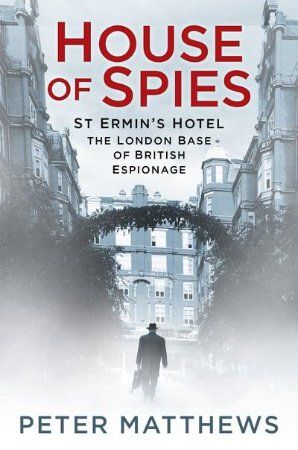Meetings – real and unreal
26th October 2021
███████████
Editorial Legal Director
Hachette UK Limited
Carmelite House
50 Victoria Embankment
London EC4Y 0DZ
Dear ███████
Re: Julian Hayes – ‘Stonehouse Cabinet Minister, Fraudster, Spy’
Meetings – Real and Unreal
The best liars blend truth with lies, and so it was with the StB agents in London. Some of the meetings described in the StB file likely did occur, but most did not. My father had two dealings with the Czech embassy: the twinning of his industrial constituency of Wednesbury with a similar town in Czechoslovakia, Kladno; and attempts to have the Czech national airlines purchase British built VC10 commercial planes. In both cases, he was obliged to talk to personnel at the London embassy, some of whom hid behind titles such as cultural attaché, commercial attaché, and the like, but who were also members of the StB. (The defector Josef Frolik said that 40 of the 45 people at the embassy were StB agents hiding behind official diplomatic titles in a Thames TV interview broadcast on 7 July 1977).
The first meeting at which the twinning of Wednesbury and Kladno was discussed took place more than a year before the StB said they recruited my father in 1960, and related to this are two letters from my father to Vlado Koudelka (aka agent ‘Kugler) – one is a handwritten and dated 8 October, apologizing that “I was unable to come along on Monday”; the other is dated 18th November 1958 and is typed, and suggests they meet the next day for lunch at the Hungarian Restaurant on Regent Street. These letters are genuine and record an innocent meeting.
An example of a fabricated meeting is recorded in the StB file as having taken place on 29 December 1965 between agent Robert Husak (aka agent ‘Hanc’) and my father at the grill room at St Ermin’s Hotel in Caxton Street, St James’. This place was so famous for being the main meeting and socialising location for all branches of the British secret services, a book was written about it by Peter Matthews in 2016. The title is ‘House of Spies – St Ermin’s Hotel, The London Base of British Espionage’, and I’d be grateful if you would recommend it to Julian Hayes.

Not only was St Ermin’s the base of British espionage, it had an extension of parliament’s division bell which rang out through the public areas to alert the many parliamentarians who also frequented the place that they needed to take the ten minute walk to the House of Commons or Lords to vote.
On page 42, Hayes says the “busy” restaurant at St Ermin’s was “ideal cover for the two men to converse.” As in many places in his book, Hayes is conflicted by the facts he is trying to present, in this case 1) St Ermin’s was “ideal cover” and 2) “It was a curious place to meet as the restaurant was regularly used by the British intelligence services” and “the reputation of the place”. He is once again trying to put a square peg – a meeting took place, into a round hole – at the last place in the entire country that a parliamentarian would agree to meet an StB communist agent ‘handler’.
Here is an extract from my own book (John Stonehouse, My Father – The true story of the runaway MP) in which I describe St Ermin’s: “It was the place where the Special Operations Executive (SOE) was formed in the 1930s, and was for years later used by the Secret Intelligence Service (SIS), which became MI6, whose HQ was nearby at 54 Broadway. It was the HQ for Section ‘D’ of SIS, and home for the Statistical Research Department of SOE. The Government Communications Headquarters (GCHQ) were around the corner in Palmer St, MI9 were in Caxton Street, and the Chief of SIS had his office at 21 Queen Anne’s Gate, with further offices in Artillery Mansions on Victoria Street and in the basement of St Anne’s Mansions. Military intelligence, MI8, had a listening post on the roof of what was the passport office in Petty France. The hotel was used by MI5, and the Naval Intelligence Division. Even as late as 1981, it was the natural meeting place for the St Ermin’s Group – a right-wing Labour Party group including Denis Healey, that organised to prevent Tony Benn taking over the Party. St Ermin’s was also a ten-minute walk from the old Scotland Yard police headquarters, the Foreign Office and the Houses of Parliament.”
In StB document 43075_021_0033 on 8 January 1966 agent Husak reports on this meeting in which, supposedly, my father said “there must be no scandal.” Although Hayes doesn’t seem fully aware of the significance of the St Ermin’s Hotel as a meeting location, my father certainly did. In the 1960’s it was well known among parliamentarians, diplomats, the military, the Press, etc. Can you imagine the scene? There sits in the “busy” restaurant a government minister, the Parliamentary Secretary for Aviation, with a man from the Czech embassy, probably known to some in the room as a communist spy, having a serious conversation over their meal. If there were reporters in the room this meeting would certainly have been noticed and made it into the newspapers, or Private Eye. If parliamentarians were in the room, questions would have been raised, even possibly in the House of Commons. If members of the British intelligence community were in the “busy” room, they most certainly would have noticed and had questions for my father to answer. None of those things happened.
But Hayes doesn’t say the very notion of there having been a meeting at this location is ludicrous, instead he says St Ermin’s, the very epicentre of the British spying community, provided “ideal cover for the two men to converse.” Has he any idea how ridiculous that statement sounds? Perhaps not. Perhaps his apparent ignorance is genuine. Or has he adopted a contrived naivety? Unfortunately, when an author pursues a narrative that doesn’t make sense, these questions arise.
Yours sincerely,
Julia Stonehouse
